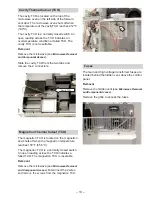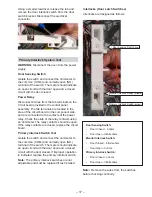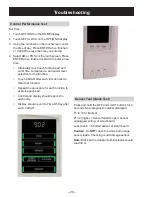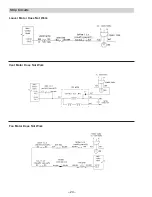
– 22 –
Performance Test
1. Measure the line voltage (loaded). This test is
based on normal voltage variations of 108V to
132V. Low voltage will lower output power and
temperature rise.
2. Place a beaker (WB64X0073) containing
1 liter of water (1000ml, 59°F - 75°F) on the
turntable and record the starting water
temperature with a thermometer. (Do not use
any other load or dish as results will very from
standard).
3. Set the microwave oven at HIGH power for
2 minutes and 3 seconds.
4. Turn on the oven.
5. Record the water temperature.
The minimum difference between the initial and
ending temperature should be 40°F at 120V.
Microwave Leakage Test
1. Place 275 ml. of water in a 600 ml beaker
(WB64X5010).
2. Place the beaker in the center of the oven
shelf.
3. Set the meter to the 2450 MHz scale.
4. Turn the oven on for 5 minutes.
5. Hold the probe perpendicular to the surface
being tested and scan the surfaces at a rate
of 1 inch/sec.
Test the following areas:
•
The entire perimeter of the door and
control panel.
•
The viewing surface of the door window.
•
The exhaust vents.
6. The maximum leakage is 4 MW/CM
2
.
7. Record data on the service invoice and
microwave leakage report.
Note: The maximum allowable leakage is 5 MW/
CM
2
. 4 MW/CM
2
is used to allow for measurement
and meter accuracy.
Inform the manufacturer of any oven found to
have emission in excess of 5 MW/CM
2
. Make
repairs to bring the unit into compliance at no cost
to the owner and try to determine the cause.
Instruct the owner not to use the oven if it has not
been brought into compliance.
High Voltage Capacitor
The high voltage capacitor has an internal shunt
resistor to automatically discharge the capacitor
when the oven turns off. Under normal operation,
the capacitor should fully discharge within 30
seconds.












































